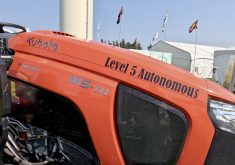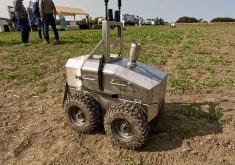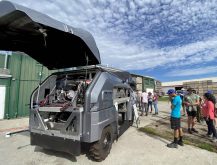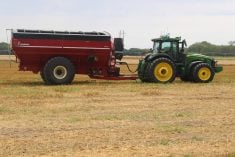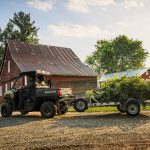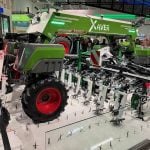Glacier FarmMedia – Another agricultural robot is roaming Canadian fields.
Brazilian-based Solinftec uses artificial intelligence to guide its robot’s motion in fields, and to analyze the images of crops it captures as it travels autonomously along crop rows.
Leo Carvalho of Solinftec said the Solix Ag robot scans for crop health and nutrition, disease, insects and weeds.
Read Also
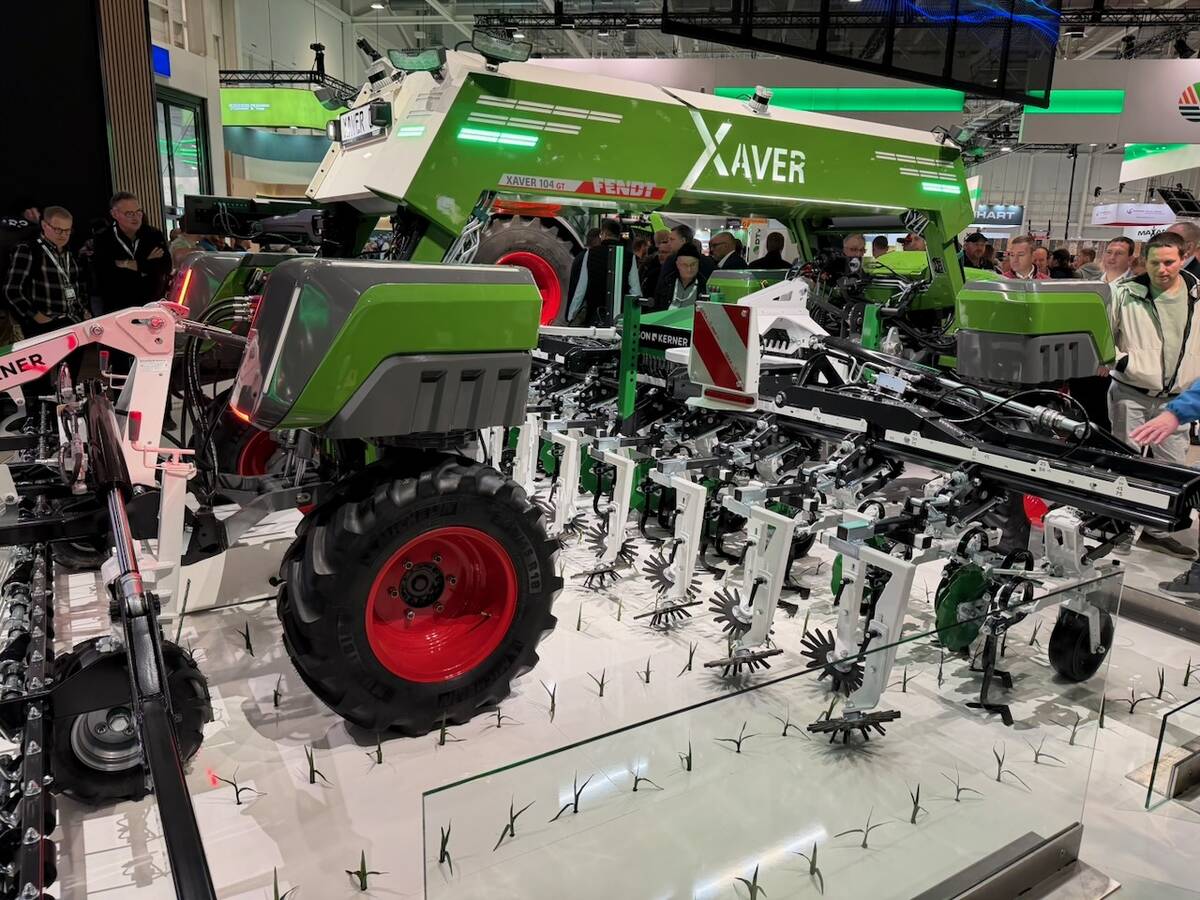
Agritechnica: Robots and more robots, Nexat loves Canada and the trouble with tariffs
Agritechnica Day 4: Robots and more robots, Nexat loves Canada and the trouble with tariffs.
“The main idea of the robot is to scan and follow the stages of the fields. It follows the growth of the plants, watching each plant every day and looks for anomalies,” Carvalho said.
“When the weeds start to grow between the rows in canola and wheat, we will create a map with recommendations for applications.”
He said the germination rates for specific areas in the field can also be calculated with the imagery the robot collects.

To adapt the Solix Ag robot for Canadian fields, Solinftec partnered with the University of Saskatchewan and Stone Farms near Davidson, Sask. Carvalho said the partnership will help Solinftec better understand the specific needs of Canadian growers and improve the algorithm for identifying weeds in Canada.
The University of Saskatchewan will help validate field results provided by the robot, while the Stone farm offers the real-world testing grounds.
Rob Stone said he is looking forward to watching how the robot performs on his farm.
“The development of most artificial intelligence types of technologies that can take some of the guesswork out of determining what’s happening in your fields is always something that I’ve been interested in. So, I was happy to host them with the robot.”
He said he’s not planning to implement robots on his farm anytime soon, but he is interested to see what they can accomplish.
“I think that would be a big win for something that’s out there identifying things, even working within the constraints of data transfer, solar charging and all of these different things that are real technological steps to overcome before you really get down into the nuts and bolts of it,” Stone said.
The Solix Ag robot has electric drive motors and it receives all of its energy from its solar panels, so there is little upkeep once it is on mission in a field.
The robot is constantly taking images of the field, but the number of images it can upload is limited by cellular or wifi connectivity. Its algorithms have been designed to identify the most important images to send to the web portal.
Once a mission plan is uploaded to the robot via a smartphone, Carvalho said the system is designed to complete the job without any operator intervention.
Previous jobs, treatment plans and imagery taken by the robot are also available through a web portal or through the smartphone app.
Carvalho said a design goal for the robotic platform is to help producers reduce their inputs by improving the timing of their application. It’s also possible to create a variable rate application map to target exact places where pesticides are needed.
Solinftec is testing the next generation of its field robots in the United States, which uses the same technology to identify weeds but will also treat them.
“We are launching the same platform, but we will attach some arms to see the weed and to make an application. The hard part of this process is to identify the weeds and identify where they are,” Carvalho said.
The latest version of the field robot has arms that can hover directly over a weed and apply a precise shot of herbicide, which has the potential to greatly reduce the amount of herbicide required.
Carvalho said the Solix Ag robot will be for sale in Canada next spring, and the company will begin to show its next generation of field robot this fall.
– This article was originally published at The Western Producer.





